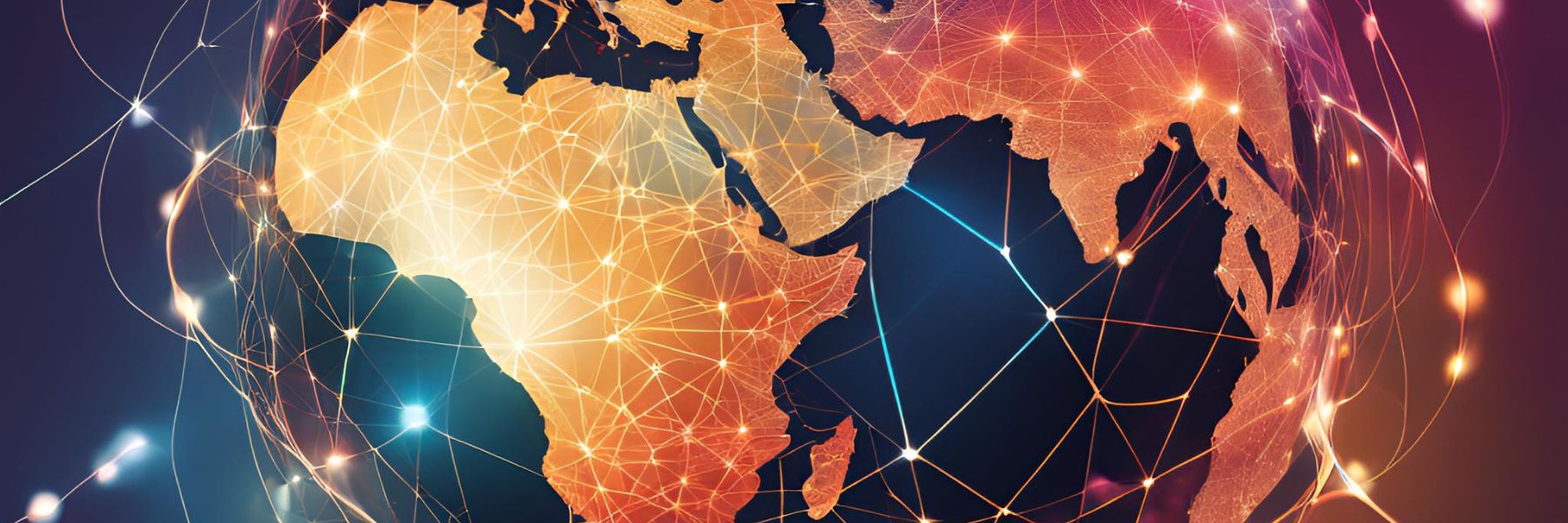Information, Communications, Technology
Information, Communications, Technology


- How Latam-GPT is building culturally relevant AI for the region
- How Aftenposten reinvents its homepage with AI to increase engagement and subscriptions
- Press freedom groups urge Kosovo government to take measures to protect journalists
- How the Kyiv Independent reached 20,000 paying members — with no paywall
- Amazon Ring Cashes in on Techno-Authoritarianism and Mass Surveillance
- When Your Power Meter Becomes a Tool of Mass Surveillance
- EFF: how to Fix the Internet: Finding the Joy in Digital Security
- The Times of India
Thiruvananthapuram Police Upgrade to Secure Digital Radios
- The Thiruvananthapuram city police in India overhauled their outdated analog wireless communication system, deploying a secure Digital Mobile Radio (DMR) network across the city. The ₹6 crore (approx. USD $720,000) upgrade includes around 1,000 new devices that provide encrypted voice and data communication, GPS tracking, photo transmissions, and interoperability with other emergency services.
- Impact: This enhances communication clarity, security, and operational coordination—especially critical during emergencies. The upgrade eliminates vulnerabilities caused by interference and unauthorized access, significantly improving public safety infrastructure.
Summary Table
| Region | Initiative | Impact Highlights |
|---|---|---|
| Thiruvananthapuram, India | Digital Mobile Radio for police | Enhanced security, coverage, interoperability, and efficiency |
Would you like deeper context on how this upgrade compares to ICT improvements in other public safety sectors or countries?
UK Police Deploy AI Cameras to Monitor Phone/Seatbelt Use
- Impact:
- Governments use AI-enabled cameras to identify phone usage and seatbelt violations in real time.
- Enhances road safety and frees law enforcement resources.
- Sets a precedent for performance-driven, real‑time enforcement using computer vision in public spaces.
UK’s Data (Use and Access) Act 2025 Receives Royal Assent
- Impact:
- Introduces statutory “smart data” frameworks for interoperable data access across health, social care, and infrastructure registers.
- Establishes a statutory Information Commission and standardizes data compliance and privacy mechanisms.
- Impacts digital trust, data portability, and future regulation of AI and smart city services.
Data Centers Face Credibility Crisis—Trust Gap Widens
- Impact:
- Public trust in data center operations (48/100) lags behind business confidence (77/100), threatening expansion of critical infrastructure.
- Calls for proactive, transparent communication on environmental impact, energy use, and community benefit.
- Influences regulatory alignment, social license, talent recruitment, and permits.
Summary Table
| Story | Key Impacts |
|---|---|
| UK AI enforcement cameras | AI-powered public safety tools implemented at scale, shifting law enforcement dynamics |
| UK Data (Use & Access) Act | Expands data access frameworks, smart-data regulation, and foundational support for AI ecosystems |
| Data center trust challenge | Highlights public skepticism; promotes transparency as strategic imperative in ICT infrastructure expansion |
International Comparison: Public Safety Radio Upgrades
Norway – Nødnett (TETRA System)
- Norway replaced fragmented analog radio systems used by police, fire, and health services with a nationwide TETRA-based digital trunked network called Nødnett.
- Benefits include encrypted communication, cross-agency interoperability, and nationwide coverage—even indoors and in rural/coastal areas.
Europe – TETRA Networks Across Countries
- Many European nations (e.g., UK, Sweden, Netherlands, Ireland) use TETRA, a robust digital standard for public safety communications.
- These systems are optimized for group calls, integrated dispatch capabilities, and high spectral efficiency in dense areas.
US/Canada – Project 25 (P25)
- Many North American agencies deploy P25 systems, which support analog and digital modes, ensuring smooth transition and interoperability.
- P25 offers wider-area coverage, simulcast capabilities, and secure operation tailored to public safety needs.
General Benefits of Digital Two-Way Radio (DMR/P25/TETRA)
- Across sectors (emergency services, transportation, utilities), digital systems offer:
- Enhanced interoperability between agencies
- Improved audio clarity, range, and reliability
- Extended battery life and added data capabilities like GPS, text, and photo sharing.
Comparison Table
| Region / System | Technology | Features & Benefits | Comparison to Thiruvananthapuram DMR Upgrade |
|---|---|---|---|
| Thiruvananthapuram (India) | DMR (Digital Mobile Radio) | Encrypted voice/data, GPS, photo transmission, anti-jamming, citywide coverage | Localized, modernized replacement of analog system with immediate operational gains |
| Norway | TETRA (Nødnett) | Nationwide coverage, strong encryption, agency interoperability | Larger scale, multi-agency coordination |
| Europe (various) | TETRA | Spectral efficiency, group calling, dispatch features | Mature, standardized across nations |
| North America | P25 | Legacy support, simulcast, wide-area coverage | Flexible transition paths and secure interoperability |
Key Takeaway
- The Thiruvananthapuram upgrade aligns with a broader international trend toward digital, encrypted, and interoperable public safety communications.
- While the scale is city-level, the features mirror those in cutting-edge global systems like Nødnett (Norway), TETRA (Europe), and P25 (North America).
- This positions the Indian city as a forward-looking model in regional digital transformation within emergency communication sectors.
Continue Reading









